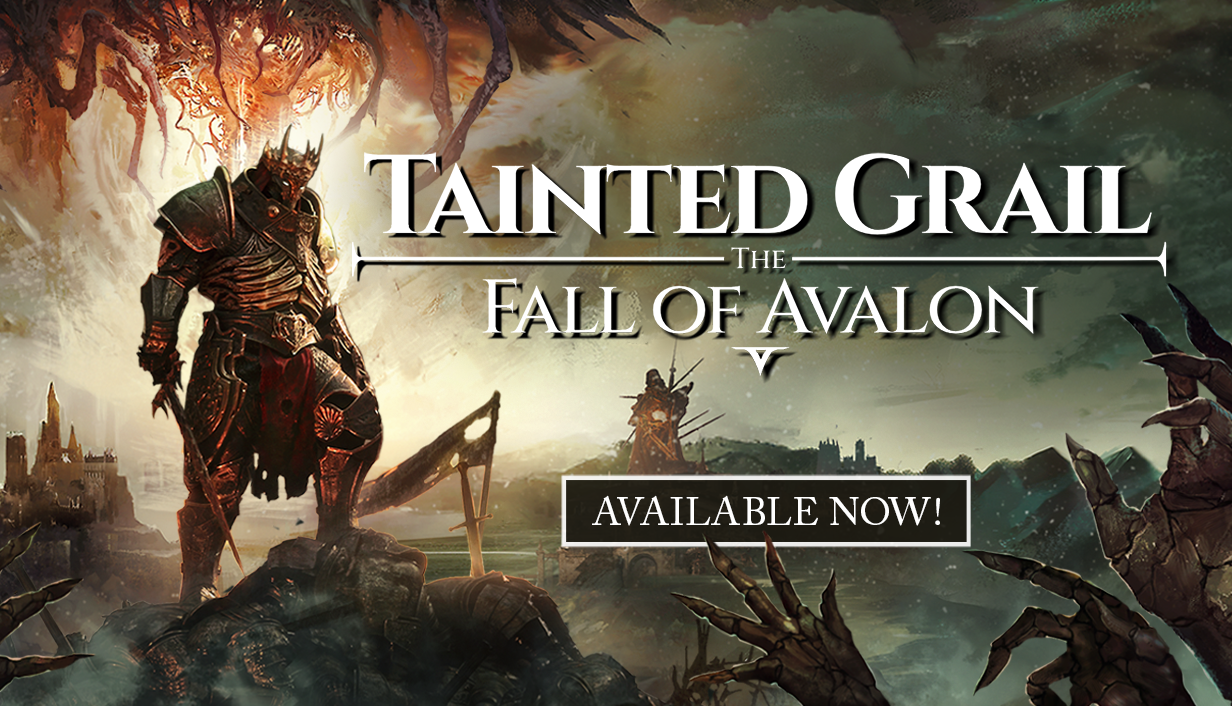
Let’s face it—fantasy RPGs are everywhere. From sprawling medieval kingdoms to post-apocalyptic wastelands, we’ve seen it all. But every once in a while, a game comes along that doesn’t just offer another sword-and-sorcery adventure—it grabs you by the collar, drags you into its world, and dares you to survive. That’s exactly what Tainted Grail: The Fall of Avalon does, and it does it exceptionally well.
Developed by the talented minds at Awaken Realms Digital, this game plunges you into a world twisted by myth, madness, and moral decay. Think Arthurian legends—but shattered, rotting, and consumed by a force known only as the Wyrdness. This isn’t Camelot. It’s a dying world desperately clinging to hope, and it’s up to you to decide whether you’ll help it rise or let it fall even further into darkness.
Now, imagine all of this delivered through a first-person, open-world RPG, packed with dozens of hours of content, a branching narrative, intense survival elements, and a combat system that actually makes you think. Sounds like a dream, right? Or maybe a nightmare, depending on how brave you are.
What’s even more impressive is the game’s indie roots and rich origin story. Born from the critically acclaimed board game of the same name—which raised nearly £5 million through crowdfunding—this digital adaptation takes that grim, mysterious world and brings it to life in stunning detail. You can feel the love, passion, and ambition in every frame.
Released on May 23, 2025, and now available on PC, PlayStation 5, and Xbox Series X/S, Tainted Grail: The Fall of Avalon isn’t just a game—it’s an emotional, strategic, and psychological journey. It’s the kind of experience that lingers long after the credits roll, where every decision feels personal and every corner of the map has a story to tell.
So, why is this game making waves in the RPG community? Why are fans calling it a sleeper hit of 2025 and comparing it to giants like Skyrim and The Witcher 3? Stick around, because we’re diving deep into what makes this game so special—and why it’s an absolute must-play for any true RPG fan.
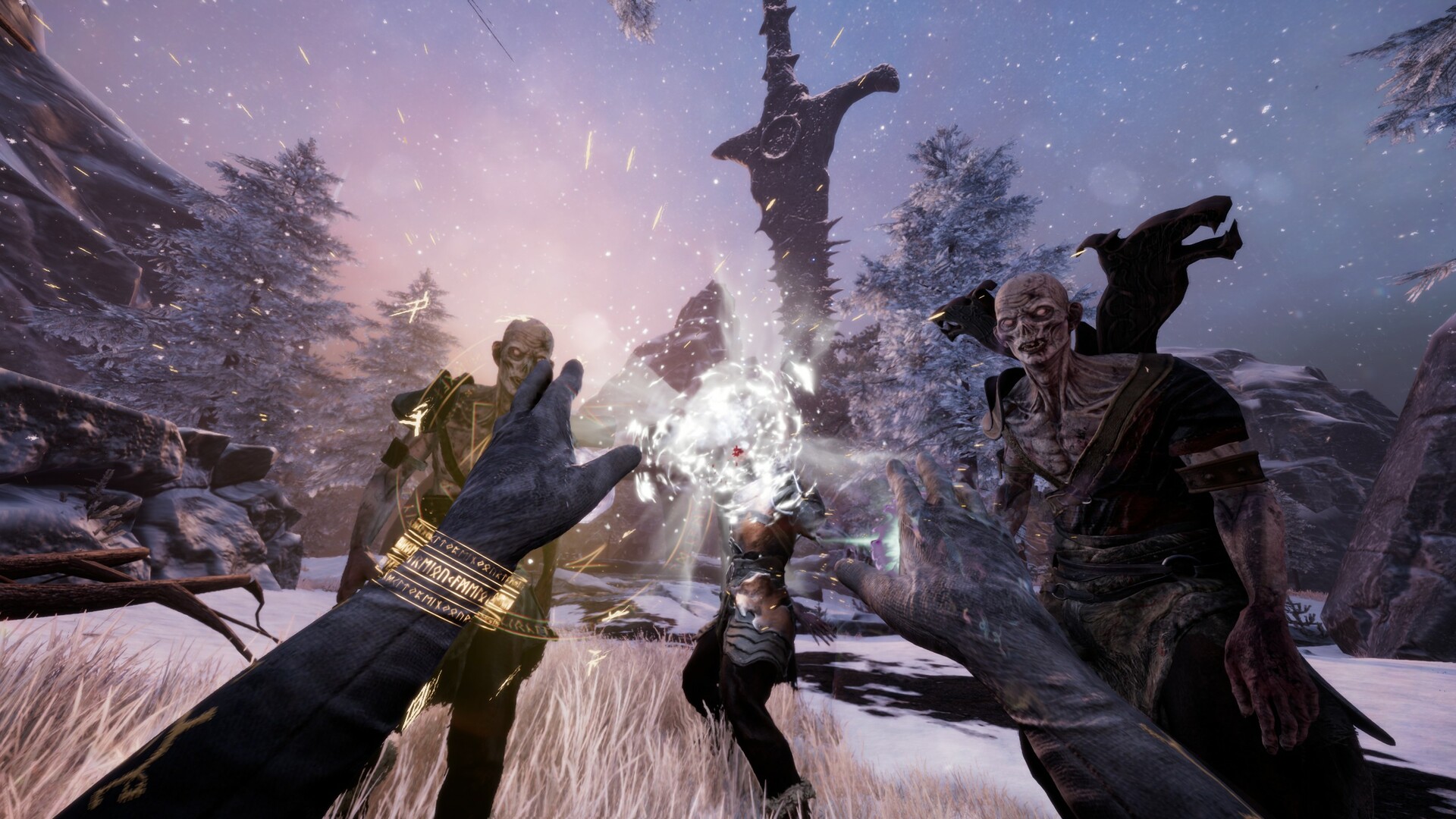
Why Tainted Grail: The Fall of Avalon Is Not Your Average RPG Experience
Let’s be honest—RPGs have been around for decades, and while the genre is rich with history, it can often fall into the trap of recycling the same mechanics and fantasy tropes. You know the drill: chosen hero, ancient prophecy, medieval setting, rinse and repeat. But every now and then, something disrupts that cycle. Tainted Grail: The Fall of Avalon is that kind of disruption—a gritty, soul-stirring RPG that refuses to play by the rules.
It Starts With the Setting… and Then Turns It Upside Down
This isn’t your cheerful fairy-tale version of King Arthur’s realm. The game takes the Arthurian mythos and smashes it into a bleak, post-collapse nightmare, hundreds of years after the legendary king’s death. Avalon isn’t thriving—it’s withering. The Knights of the Round Table are nothing but fading legends, the land is corrupted by a supernatural force called the Wyrdness, and humanity’s grip on survival is slipping.
It’s this haunting atmosphere, equal parts myth and madness, that sets the tone. From the very beginning, the game makes it clear: this isn’t a world you’re going to save easily—if at all.
Indie Roots, AAA Ambition
What really makes this game feel different is its indie DNA. Developed by Awaken Realms Digital, a Polish studio best known for their work in tabletop gaming, this project was born out of pure passion—and it shows in every detail. The world design is tight, the storytelling is focused, and the creative risks taken (like the nightmarish Wyrdness or the absence of clear-cut morality) reflect a studio unafraid to challenge the player instead of coddling them.
Despite being an indie title, the production values are top-tier. From fully voiced dialogue to dynamic lighting, high-fidelity textures, and cinematic storytelling, you could easily mistake it for a AAA game. And that’s probably because, spiritually, it is—it just didn’t have a hundred-million-dollar marketing budget.
A Game That Respects Your Time and Intelligence
So many modern RPGs flood your map with icons and objectives, assuming more content equals more fun. Tainted Grail takes a different approach. It’s not about how many tasks you can tick off—it’s about how deeply you engage with the world around you.
There are no obvious “good” or “evil” choices. Morality here is murky, outcomes are unpredictable, and consequences have weight. The narrative isn’t just a backdrop—it evolves with you. It reflects your style of play, your alliances, your betrayals, and even your inaction. Every decision you make is like throwing a stone into a pond—the ripples may take time, but they always return to you.
The Mechanics Go Beyond the Basics
Customization isn’t just encouraged—it’s central. The game doesn’t lock you into rigid classes. You want to play as a melee-heavy tank with magical backup? Go for it. Or maybe a stealth archer with a few necromantic tricks? It’s not only possible, it’s incredibly satisfying. Build freedom is vast and meaningful, allowing players to experiment, fail, succeed, and refine their playstyle organically.
And then there’s the Wyrdness, the game’s wild card mechanic. As night falls, this mysterious force distorts the land and alters enemy behavior. It’s not just a visual change—it shifts the entire tone and strategy of gameplay. It keeps you alert, constantly adapting, and on edge in the best possible way.
A Game That’s Not Afraid to Be Dark
While most RPGs flirt with darkness, Tainted Grail embraces it fully. This is a game that asks difficult questions. It challenges you with morally grey scenarios, makes you uncomfortable, and throws curveballs that test more than just your combat skills. It explores the themes of decay, disillusionment, and survival, not just in the world around you, but within your character as well.
It’s not about being the hero—it’s about what kind of person you become when the world is falling apart around you. And that’s something few games genuinely explore.

Unfolding the Dark and Epic Storyline of a Post-Arthurian Avalon
At the heart of Tainted Grail: The Fall of Avalon lies a storyline that’s as rich as it is relentless, drawing you into a world where legends are dead, hope is fleeting, and survival teeters on a knife’s edge. This isn’t a tale of destiny and heroes—it’s a grim, intimate, and sprawling epic set in the decaying aftermath of King Arthur’s reign, hundreds of years after his mythic kingdom crumbled into dust.
This version of Avalon is unrecognizable. The land that was once said to be a beacon of justice and nobility has turned into a fractured and cursed world, overrun by chaos, isolation, and despair. The Knights of the Round Table are long gone, their ideals shattered, and their names reduced to whispered tales told by those desperate for a scrap of meaning in an unforgiving world.
You don’t step into the shoes of a legendary hero—you become a survivor, a wanderer, someone who didn’t choose this life, but was chosen by fate to confront its horrors. And in this broken kingdom, your presence matters more than you think.
A Story Written in Shadows and Sacrifices
The narrative is not just layered—it’s labyrinthine, weaving together the political, supernatural, and personal in a way few RPGs dare to. As you move through Avalon, you’ll encounter factions locked in brutal power struggles, religious cults seeking twisted salvation, and desperate communities clinging to myths that may no longer hold truth. Every group you meet has its own philosophy, and no side is fully right or wrong. That’s where things get interesting.
The choices you make ripple across the land. They don’t just change your quest outcomes—they influence entire regions, major characters, and the future of Avalon itself. Do you align with the remnants of the old world, trying to revive its ideals? Or do you carve a new path in the ashes, even if it means burning bridges and making enemies along the way?
This is storytelling at its finest—interactive, reactive, and deeply human. There’s no roadmap to redemption or ruin. There’s just you, the land, and the choices you make.
Every Character Tells a Story—And Every One Feels Real
Over the course of your journey, you’ll meet over 250 voiced NPCs, each with their own history, scars, and motivations. These aren’t cookie-cutter quest-givers. These are people shaped by trauma, loss, ambition, and madness—and how you interact with them shapes the emotional core of your experience.
You might comfort a grieving widow, betray a once-loyal friend, or uncover a forgotten truth that rewrites everything you thought you knew. The game isn’t afraid to explore morally ambiguous territory, where your best intentions can still lead to horrifying consequences. It’s not about being good or evil—it’s about surviving in a world where neither concept seems to matter anymore.
Branching Paths with Real Consequences
Unlike many RPGs that promise branching narratives but funnel you back to the same few outcomes, Tainted Grail commits fully to the idea that your story is yours alone. From small choices—like how you deal with a band of raiders—to massive, world-shaping decisions that could tip the balance of entire regions, everything you do is remembered.
There are multiple endings, alternate quest lines, and dozens of subtle narrative shifts based on your actions. This makes replayability more than just a bonus—it’s a necessity for those wanting to uncover every corner of this cursed kingdom’s history.
A World Where the Land Itself Tells the Story
Avalon isn’t just a backdrop for the plot—it’s a living, haunted canvas where every location is dripping with lore. Abandoned villages, ancient ruins, desecrated temples—each one has a tale to tell. Whether it’s through journal entries, environmental clues, or cryptic conversations with locals, the game constantly encourages you to slow down and take in the atmosphere.
And then there’s the Wyrdness—a mysterious, almost Lovecraftian force that warps reality and infects everything it touches. It’s more than just a visual or combat mechanic. It’s part of the narrative. It symbolizes the spiritual decay of Avalon, a creeping corruption that reflects the emotional and moral deterioration of its people. Learning to navigate, understand, and even use the Wyrdness becomes part of your journey.
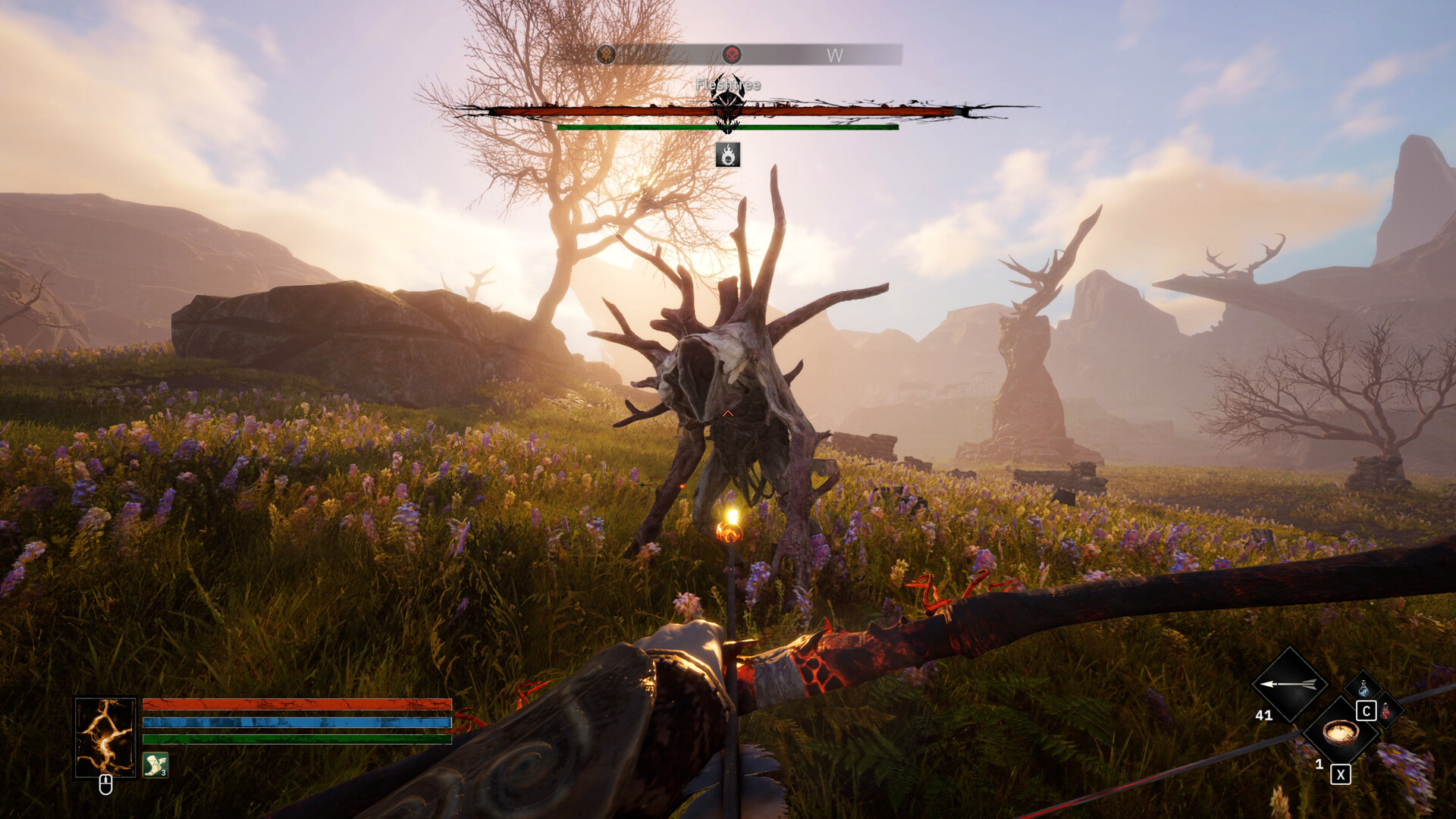
Gameplay Features That Make Tainted Grail a Must-Play RPG
The mechanics here are as deep and customizable as they come. This isn’t just button-mashing or stat-boosting—it’s personal evolution.
You’re given limitless playstyles. Want to be a stealthy archer who strikes from the shadows? Done. A mystical necromancer summoning skeletal allies? Go for it. A berserker alchemist punching enemies while setting them on fire with potions? Absolutely.
Here’s a breakdown of the key features that keep things fresh:
- Dynamic Combat System – Mix melee, ranged, shields, throwables, and magic. Combat is fast and unforgiving.
- Skill and Attribute Customization – Build your hero however you want. There’s no one “right” way.
- Crafting & Alchemy – Mix potions, forge weapons, or enchant gear.
- Survival Mechanics – The Wyrdness changes the rules at night. Enemies mutate, dangers multiply, and staying alive becomes the priority.
- Immersive Activities – From fishing and farming to sketching and blacksmithing, the world rewards the curious and the creative.
And no, this isn’t fluff. These systems are all tied to progression and player immersion. They don’t feel like chores—they feel like choices.
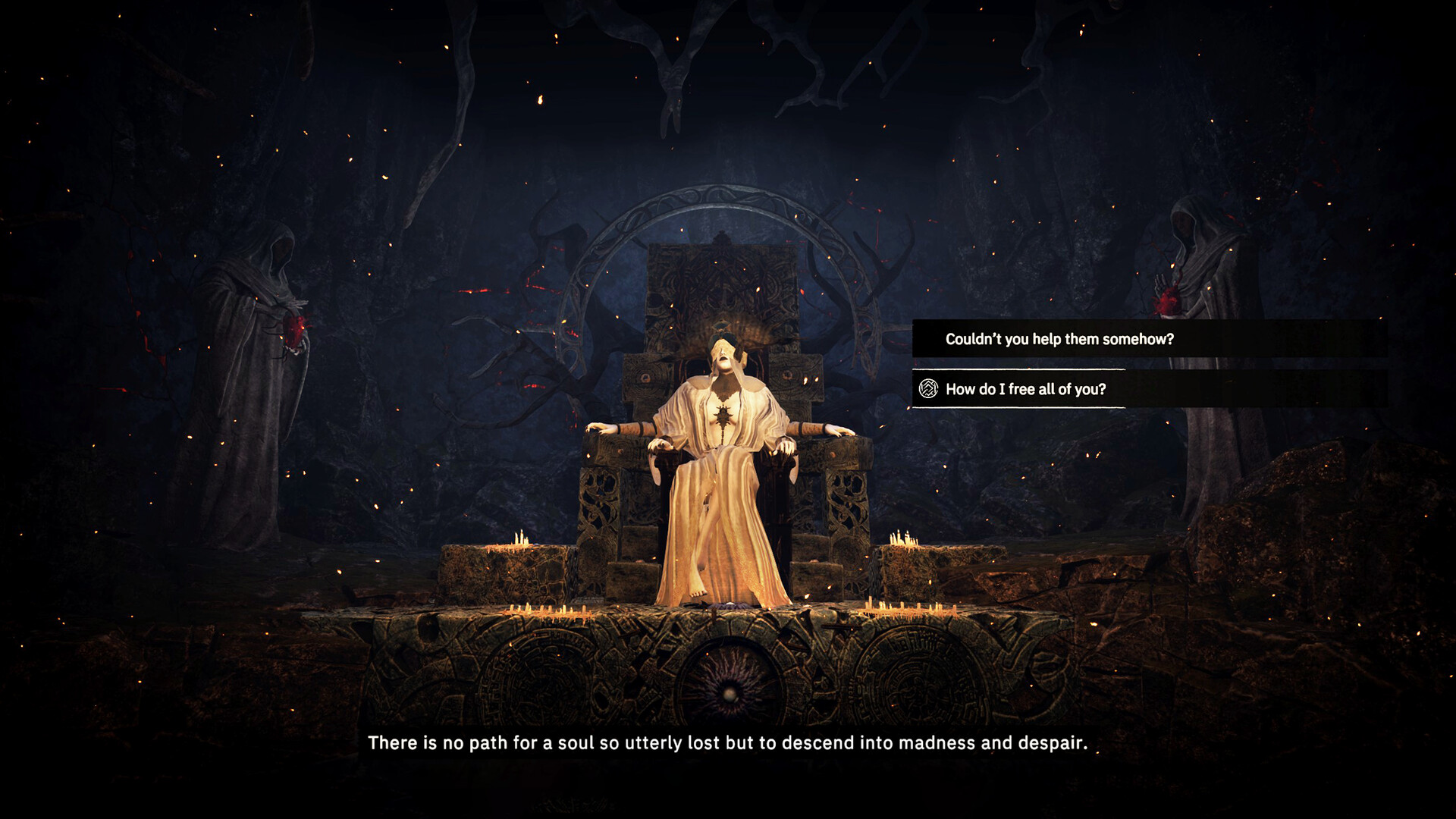
How the World of Avalon Feels Alive, Dangerous, and Beautiful
Avalon is the real star here. Each of the three distinct zones is dripping with atmosphere and purpose:
- Misty Horns of the South – Ethereal, foggy, and filled with secrets. Expect dungeons, ruins, and ancient magic.
- Sunlit Cuanacht Village – The closest thing to warmth you’ll find, this zone offers temporary peace and heavy lore.
- Frozen Peaks of the Forlorn Swords – Brutal and beautiful, it’s as much a battleground as it is a mystery.
Exploration is rewarded with hidden items, environmental storytelling, NPC interactions, and optional dungeons that often feel more memorable than main quests in other games. At night, everything shifts. The Wyrdness creeps in, changing both landscape and enemy behavior. This is where the game turns survival horror. You’ll find yourself checking every corner, rethinking your strategy, and praying for sunrise.
Avalon isn’t just a world—it’s a living, breathing, and dying character. You don’t just explore it. You fight for it, shape it, and sometimes fear it.

Available Platforms, Release Date, and Final Thoughts on This Epic Fantasy
So where can you play it? Tainted Grail: The Fall of Avalon launched on May 23, 2025, and is now available on:
- PC
- PlayStation 5
- Xbox Series X/S
Whether you prefer a mouse and keyboard or a controller, the experience translates beautifully. Performance-wise, it’s optimized well across platforms with minimal bugs and solid load times—something many AAA studios still struggle to nail.
If you’re craving a gritty, thought-provoking RPG with meaningful choices, powerful lore, and immersive gameplay, Tainted Grail: The Fall of Avalon needs to be on your radar. It’s a mature, complex world that respects your time, rewards your curiosity, and challenges your moral compass. Simply put? This game doesn’t hold your hand—it asks for your soul.
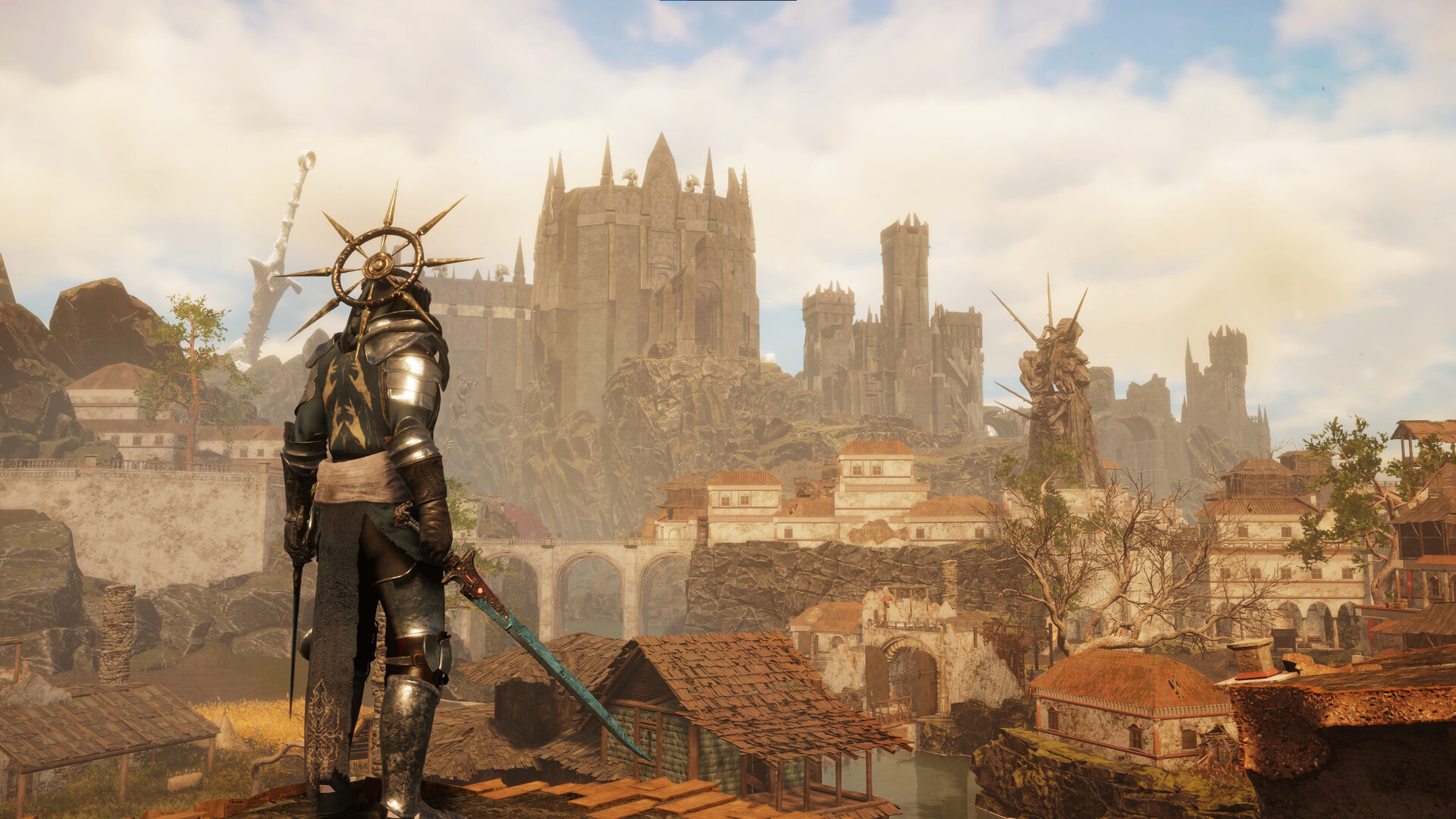
Conclusion
When you boot up Tainted Grail: The Fall of Avalon, you’re not just stepping into another fantasy game—you’re stepping into a living legend twisted by time, war, and supernatural horror. This isn’t about fulfilling a cliché prophecy or saving the world in shining armor. It’s about surviving in a broken land, making impossible choices, and wrestling with the kind of moral dilemmas most games wouldn’t dare touch.
From its rich post-Arthurian lore to its branching narrative, immersive combat, and deeply customizable playstyles, this game offers far more than just pretty graphics and quest markers. It forces you to think, adapt, and sometimes just survive the night. The inclusion of dynamic environments, complex factions, a fully voiced cast, and over 50+ hours of content ensures that no two journeys through Avalon will ever feel the same.
And let’s not forget the nightfall mechanic and the creeping terror of the Wyrdness—a feature that doesn’t just change the world visually, but actively alters how you play. The stakes feel higher. The danger is real. Suddenly, that dungeon you were exploring in daylight becomes a trap-laden death maze after sundown. It’s these little touches, these decisions in design, that elevate this game from great to exceptional.
What really makes Tainted Grail stand out, though, is its emotional depth. The characters aren’t just quest-givers—they’re people with history, trauma, and motivations that blur the lines between right and wrong. Your actions don’t just affect your stats—they ripple through the world and its people. And in a time when so many games prioritize fast-paced action over meaningful storytelling, this one dares to slow down and let you feel.
Whether you’re a hardcore RPG veteran or just someone looking for a story that will stick with you long after you put the controller down, this game is a must-play. It’s not flawless—no game is—but what it does well, it does better than most: it respects the player’s intelligence, challenges your decisions, and offers a world that truly lives and breathes.
So if you’ve been craving a game that’s dark, daring, and dripping with atmosphere… Tainted Grail: The Fall of Avalon is calling your name. And trust me—you’ll be thinking about Avalon long after you’ve left it behind.
FAQs about Tainted Grail: The Fall of Avalon
- What makes Tainted Grail: The Fall of Avalon different from other open-world RPGs?
Tainted Grail offers a darker, more mature take on fantasy with its morally grey choices, branching story, and a survival element at night. It’s more immersive and nuanced than most traditional RPGs. - Is the game connected to the Tainted Grail board game?
Yes! The video game is inspired by the board game of the same name. The original board game was crowdfunded successfully and set the stage for the digital version’s world and tone. - Can I play as any class or role in the game?
Absolutely. There are no strict classes. You can mix and match skills, weapons, and attributes to build whatever playstyle fits you—from stealth assassins to magical berserkers. - Is there any multiplayer or co-op mode in the game?
As of now, the game is a single-player experience focused on immersion and story. There are no multiplayer or co-op modes announced. - Does the game have replay value?
Definitely. With its branching storylines, multiple factions, and diverse builds, replaying the game offers new perspectives, endings, and outcomes each time.